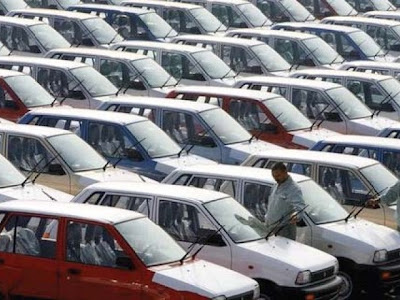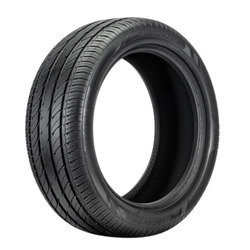

**Challenges and Issues Encountered by the Suzuki Liana in the Pakistani Market**
The Suzuki Liana, launched in Pakistan in the mid-2000s by Pak Suzuki Motors, was initially regarded as a potentially strong player in the compact sedan category. Positioned as the successor to the well-received Suzuki Baleno, the Liana was anticipated to rival established contenders such as the Honda City and Toyota Corolla. Despite featuring a contemporary design and attributes for its era, the Liana faced difficulties securing a robust presence in the Pakistani automotive landscape. This article delves into the primary challenges and issues that led to the Suzuki Liana’s underwhelming performance in Pakistan.
—
### 1. **Mechanical and Technical Concerns**
One of the most substantial obstacles encountered by the Suzuki Liana was its image of mechanical instability. Numerous users reported recurring difficulties with the Electronic Control Unit (ECU), sensors, and fuel injection system. These issues were especially acute in the Liana’s CNG (Compressed Natural Gas) variants, which gained popularity amidst escalating fuel prices in Pakistan.
The CNG systems, often installed at the factory, were not seamlessly integrated with the vehicle’s engine management framework. This resulted in performance complications, diminished fuel efficiency, and engine knocking. The shortage of adept mechanics knowledgeable about the Liana’s somewhat intricate electronics further intensified these challenges.
—
### 2. **Scarcity of Spare Parts**
Another significant impediment was the limited accessibility and high expense of spare parts. Unlike the Suzuki Mehran or Cultus, known for their extensive networks of parts suppliers and technicians, the Liana’s components were more difficult to obtain and pricier. This deterred potential buyers and contributed to a decline in its resale value.
Owners frequently had to depend on imported parts or visit authorized service centers, which raised maintenance expenses. This was a considerable drawback in a cost-sensitive market like Pakistan.
—
### 3. **Subpar Resale Value**
In the Pakistani marketplace, resale value is a pivotal factor in a vehicle’s desirability. The Liana faced a dramatic decline in resale value. Owing to its mechanical problems, limited spare parts supply, and a lack of confidence among mechanics and buyers, the Liana quickly gained the reputation of being a “hard-to-sell” vehicle.
This perception dissuaded new purchasers from considering the Liana, creating a self-perpetuating cycle that further diminished its market viability.
—
### 4. **Intense Competition**
At the time of the Liana’s introduction, the market was already saturated with dominant models such as the Toyota Corolla and Honda City. These rivals provided superior reliability, stronger brand loyalty, and a broader service network.
In addition, both Toyota and Honda consistently refreshed their models with contemporary features and designs, whereas the Liana largely remained static throughout its time in Pakistan. This rendered it less attractive to consumers seeking modern functionality and aesthetics.
—
### 5. **Insufficient Marketing and Brand Strategy**
Pak Suzuki did not successfully promote the Liana to differentiate it from competitors. Although the vehicle offered several advanced features for its period—like power windows, ABS, and a digital climate control system—these were not effectively emphasized in promotional efforts.
Moreover, the Liana’s design, while practical, lacked the visual allure that many Pakistani consumers desired in a sedan. The inability to establish a strong brand image for the Liana further fueled its uninspiring performance.
—
### 6. **Inadequate After-Sales Services**
After-sales support is essential for customer satisfaction in vehicle ownership. Numerous Liana owners reported disappointing experiences with authorized dealerships. The deficiency of trained technicians and diagnostic resources for the Liana’s more sophisticated systems resulted in extended repair durations and heightened dissatisfaction among customers.
This lack of support not only impacted current owners but also discouraged potential buyers who prioritized reliable service and peace of mind.
—
### 7. **Discontinuation and Impact**
Due to its lackluster performance in the market, the Suzuki Liana was ultimately phased out in Pakistan. Its legacy is a mixed one—while a segment of owners valued its roomy interior and features, the majority perceived it as an unreliable and expensive vehicle to upkeep.
The Liana’s shortcomings also served as a valuable lesson for Pak Suzuki, which has since pivoted towards more practical and dependable models catered to the preferences of Pakistani consumers.
—
### Conclusion
The experience of the Suzuki Liana in the Pakistani market serves as an instructive example of how technical deficiencies, inadequate after-sales support, and poor market positioning can hinder a vehicle’s success. Although it had the potential to be a formidable contender in the compact sedan market, a confluence of mechanical challenges, elevated maintenance costs, and fierce competition ultimately led to its decline. For automakers in emerging markets like Pakistan, the story of the Liana highlights the significance of reliability, cost-effectiveness, and robust service networks in fostering consumer trust and achieving long-term success.






